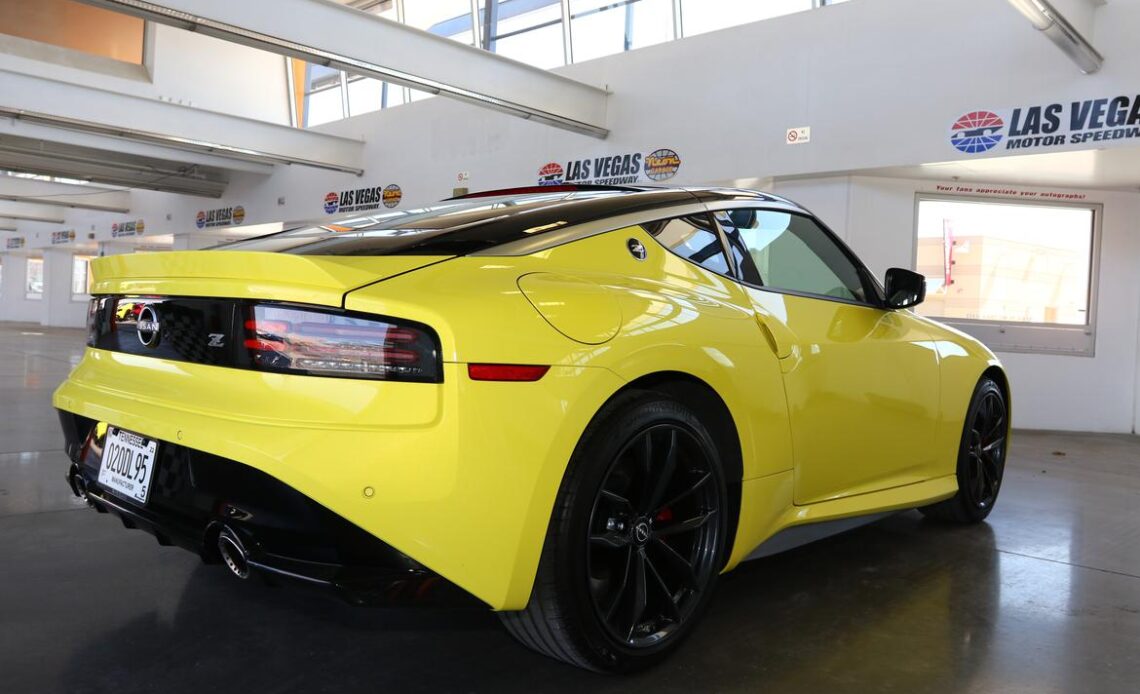The new Nissan Z has a clutch pedal, something you won’t find in any modern Ferrari, Lamborghini or even Corvette.
Nissan also offers a nine-speed automatic–it seemed quicker during our informal, uninstrumented testing–but traditionalists can go old-school.
The Z’s main vibe, in fact, is its familiarity. By today’s standards, it offers a light, airy cockpit. The driver doesn’t feel bolted to the floor, and the windowsills don’t sit too high.
[Good taste returns: Peter Brock driver the new Nissan Z | Column]
The A-pillars aren’t as thin as those from the ’70s, but they’re not nearly as thick as they used to be.
The dash layout, although modern, still feels familiar without being painfully retro. The main display, for example, is just a simple, digital affair, while three auxiliary gauges, a Z-car hallmark since day one, top the dashboard.
The steering wheel, we’re told, shares dimensions with the one found in the GT-R. We didn’t take measurements, but we’d call the wheel meaty and appropriate for this kind of car.
Likewise, the shifter feels smooth and precise. Nissan has greatly improved the feel of its switches and controls over the years, and the Z’s have a more upmarket feel. The same goes for the touchpoints–things like the armrest. Those details may not make a car faster, but they matter when you’re doing the daily grind.
The seats also felt properly bolstered. They’re not silly like the ones in the old Juke Nismo, but they don’t let you slide around.
One more throwback: a real parking brake lever instead of the all-too-common button of today.
You can also get in and out of the Z without hitting your head. While the Z interior feels roomier, the car itself seems tidier–perhaps because it’s easier to get a sense for all four corners.
On track–sadly, we took just a few laps around Las Vegas Motor…
Click Here to Read the Full Original Article at Grassroots Motorsports Online Articles…

